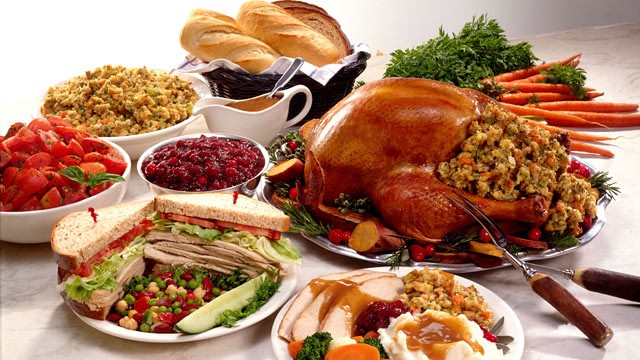Gravy Recipes and Tips
Everybody loves gravy. There's no better way to capture the essence of a bird or roast than by making gravy using pan drippings and meat juices. But everybody has had awful gravy that's thick and pasty and flavorless. You can serve the best gravy every time by following these tips and using these recipes.
The only problem with traditional gravy recipes is that they are last-minute. This is the final kitchen task of the day, since you need the drippings from the turkey roasting pan and stock from simmering giblets for the best flavor. For best results, try to get others to help with finishing other dishes while you concentrate on that gravy.
There are three secrets to making perfect gravy.
- Use a wire whisk to stir the gravy to avoid lumps.
- Make sure to thoroughly cook the flour in the fat (before adding liquid) to avoid a starchy taste.
- Salt is the key to the best flavor.
When you take the turkey out of the oven, remove it from the pan, take out the stuffing if used, cover it with foil and let it rest while the gravy is made.
You only need about 1/4-1/3 cup of fat to make lots of gravy. You're basically making a white sauce, except it will be brown because of the turkey drippings. Skim off any excess fat from the roasting pan, being careful to leave all the little brown bits that have so much flavor.
Now it's time to add the flour. Sprinkle the flour over the brown bits and fat left in the pan. Cook and stir until the mixture has bubbled for several minutes. Then start adding the liquid.
My grandmothers always put flour in a little jar with some water to make a slurry, shaking it vigorously to dissolve, then added that to the drippings. If you use this method, you will need to boil the gravy hard for 10-20 minutes to get rid of the flour taste. This also concentrates the flavor, as water evaporates from the stock.
You can also brown flour in the oven (watch it carefully!), then simply sprinkle that over the drippings and cook to make a roux before adding the stock and water.
For liquid, I like to use stock made from the turkey giblets (except the liver, which adds a bitter flavor), and the water used to cook the potatoes. Add to the drippings and flour in the pan and stir and stir and boil and boil.
Salt is the key to the best gravy. But you have to add and taste constantly. Start with about 1/2 tsp. for 4 cups of liquid. Then sprinkle in a tiny bit at a time, stirring and tasting. You'll know when you have the right amount, because the gravy will suddenly come alive with a marvelous meaty flavor.
If your gravy is lumpy no matter what you do, strain it through a large colander or strainer. Using a blender or food processor to try to remove small lumps from gray is nearly impossible.




